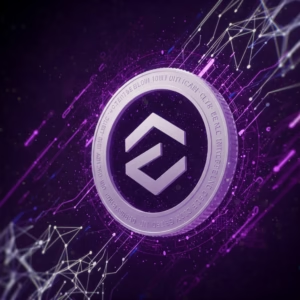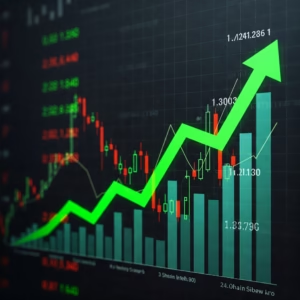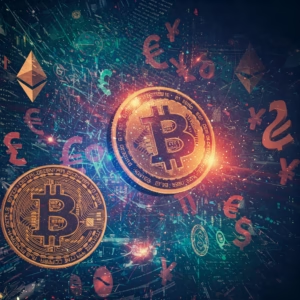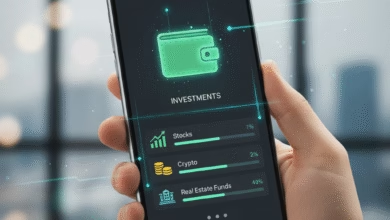
In the fast-paced world of cryptocurrency, new names and technologies emerge frequently. One that has garnered significant attention is Solana (). You might have heard it mentioned alongside other major players like Bitcoin and Ethereum, perhaps even being called an “Ethereum killer.” But what exactly is Solana, and why is it generating so much buzz? This comprehensive guide will break down the essentials of Solana in simple terms, making it easy for anyone, even those new to crypto, to understand its potential and significance.
Decoding Solana: Understanding the Basics of This High-Speed Blockchain

At its core, Solana is a high-performance, open-source blockchain platform designed for speed and scalability. Think of a blockchain as a digital ledger that records transactions securely and transparently. Solana’s key innovation lies in its ability to process a significantly higher volume of transactions much faster and at lower costs compared to many older blockchain networks. This impressive throughput has made it a popular platform for various applications, from decentralized finance (DeFi) to non-fungible tokens (NFTs).
The Secret Sauce: Proof of History (PoH) and Solana’s Speed Advantage
Solana achieves its remarkable speed through a unique combination of technologies, most notably its Proof of History (PoH) consensus mechanism. While many blockchains rely on Proof of Stake (PoS) or Proof of Work (PoW) to agree on the order of transactions, PoH acts like a historical record that timestamps transactions as they occur. This allows the network to know the order of events without needing to constantly communicate and agree, drastically increasing transaction processing speeds.
In addition to PoH, Solana utilizes other innovative features like:
- Tower BFT: A Byzantine Fault Tolerance algorithm optimized for PoH.
- Turbine: A block propagation protocol for faster data distribution.
- Gulf Stream: A mempool-less transaction forwarding protocol.
- Sealevel: A parallel transaction processing engine.
- Pipelining: A transaction processing unit for optimization.
- Cloudbreak: A horizontally scaled accounts database.
- Archivers: A distributed ledger storage solution.
These technologies work together to make Solana one of the fastest blockchains available.
What Makes Solana Stand Out? Key Features and Benefits

Solana’s high speed and low transaction fees offer several compelling advantages:
- Scalability: Solana can handle thousands of transactions per second (TPS), far exceeding the capabilities of many earlier blockchains. This makes it suitable for applications with a large user base.
- Low Transaction Costs: Sending transactions on the Solana network typically costs fractions of a cent, making it significantly cheaper than networks with higher fees.
- Growing Ecosystem: Solana has attracted a vibrant and rapidly expanding ecosystem of decentralized applications (dApps) in areas like DeFi, NFTs, gaming, and more.
- Developer-Friendly: Solana supports popular programming languages like Rust, making it accessible for developers to build innovative applications on the platform.
These features have contributed to Solana’s growing popularity among users and developers alike.
Exploring the Solana Ecosystem: DeFi, NFTs, and Beyond
Solana’s high performance has made it a fertile ground for a diverse range of decentralized applications:
- Decentralized Finance (DeFi): Numerous DeFi protocols have launched on Solana, offering services like decentralized exchanges (DEXs), lending and borrowing platforms, and yield farming opportunities.
- Non-Fungible Tokens (NFTs): Solana has become a popular platform for creating, buying, and selling NFTs, with a thriving community and various marketplaces.
- Decentralized Autonomous Organizations (DAOs): Solana supports the creation and operation of DAOs, allowing communities to govern projects in a decentralized manner.
- Web3 Applications: Solana is being used to build various Web3 applications, aiming to create a more decentralized and user-controlled internet.
The expanding Solana ecosystem showcases the platform’s versatility and potential.
Investing in Solana (): Important Considerations

If you’re considering investing in Solana’s native cryptocurrency, , it’s essential to approach it with caution and awareness of the inherent risks in the cryptocurrency market. The price of can be highly volatile and influenced by various factors, including market trends, technological advancements, and adoption rates.
Before investing in , remember to:
- Conduct thorough research (DYOR – Do Your Own Research): Understand Solana’s technology, its goals, its competitive landscape, and the potential risks involved.
- Assess your risk tolerance: Only invest an amount of money that you can afford to lose.
- Learn about where to buy and securely store : Various cryptocurrency exchanges offer , and you’ll need a secure digital wallet to hold your tokens.
Staking Solana: Earning Rewards by Participating in the Network
Like many Proof of Stake blockchains, Solana allows holders to participate in securing the network and earn rewards through staking. By delegating your to a validator, you contribute to the network’s operation and receive a portion of the rewards generated. Staking can be a way to potentially earn passive income on your holdings, but it’s crucial to understand the staking process and choose reliable validators.
Understanding the Potential and Challenges of Solana

Solana’s innovative technology and growing ecosystem present significant potential. Its high speed and low fees address some of the scalability issues faced by earlier blockchains. However, like any emerging technology, Solana also faces challenges:
- Network Stability: Solana has experienced occasional network outages, raising concerns about its reliability. Developers are actively working on addressing these issues and improving network stability.
- Centralization Concerns: While Solana aims to be decentralized, some critics have raised concerns about the distribution of power and the number of validators.
- Competition: Solana operates in a competitive landscape with other high-performance blockchains constantly evolving and vying for users and developers.
Understanding both the potential and the challenges is crucial for a balanced perspective on Solana.
Getting Started with Solana: Resources for Further Learning

If you’re interested in diving deeper into Solana, here are some valuable resources:
- Solana Foundation: The official website of the Solana Foundation, providing comprehensive information about the project.
- Solana Docs: Technical documentation for developers and those seeking in-depth information.
- Solana Beach: A block explorer for the Solana blockchain, allowing you to view transactions and network activity.
- Solana Community: Engage with the active Solana community on platforms like Discord and Twitter.
Exploring these resources will provide you with a more detailed understanding of the Solana ecosystem.
The Future of Solana: What’s Next for This Fast-Growing Blockchain?
Solana continues to evolve rapidly, with ongoing development focused on improving network stability, scalability, and the overall user experience. Key areas to watch include:
- Addressing Network Congestion: Efforts to enhance the network’s ability to handle peak demand and prevent outages.
- Expanding the Ecosystem: The continued growth and diversification of dApps and use cases on the Solana platform.
- Interoperability Solutions: Exploring ways for Solana to interact seamlessly with other blockchains.
Staying informed about these developments will help you understand the long-term trajectory of Solana.
Solana has emerged as a prominent player in the cryptocurrency space, offering a unique blend of speed and low costs that has attracted a growing community of users and developers. While it faces challenges, its innovative technology and expanding ecosystem position it as a significant contender in the ongoing evolution of blockchain technology. By understanding its fundamentals, potential, and risks, you can better navigate the world of Solana and its place in the broader financial landscape.





